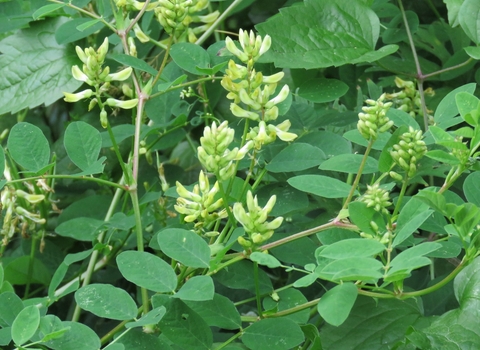
Wild liquorice © Brian Eversham
Wild liquorice
A sprawling plant, wild liquorice often has large, kinked stems. It favours woodland, scrub and grassland habitats on chalky soils - look for pea-like flowers and pods. This liquorice is not edible, though!
